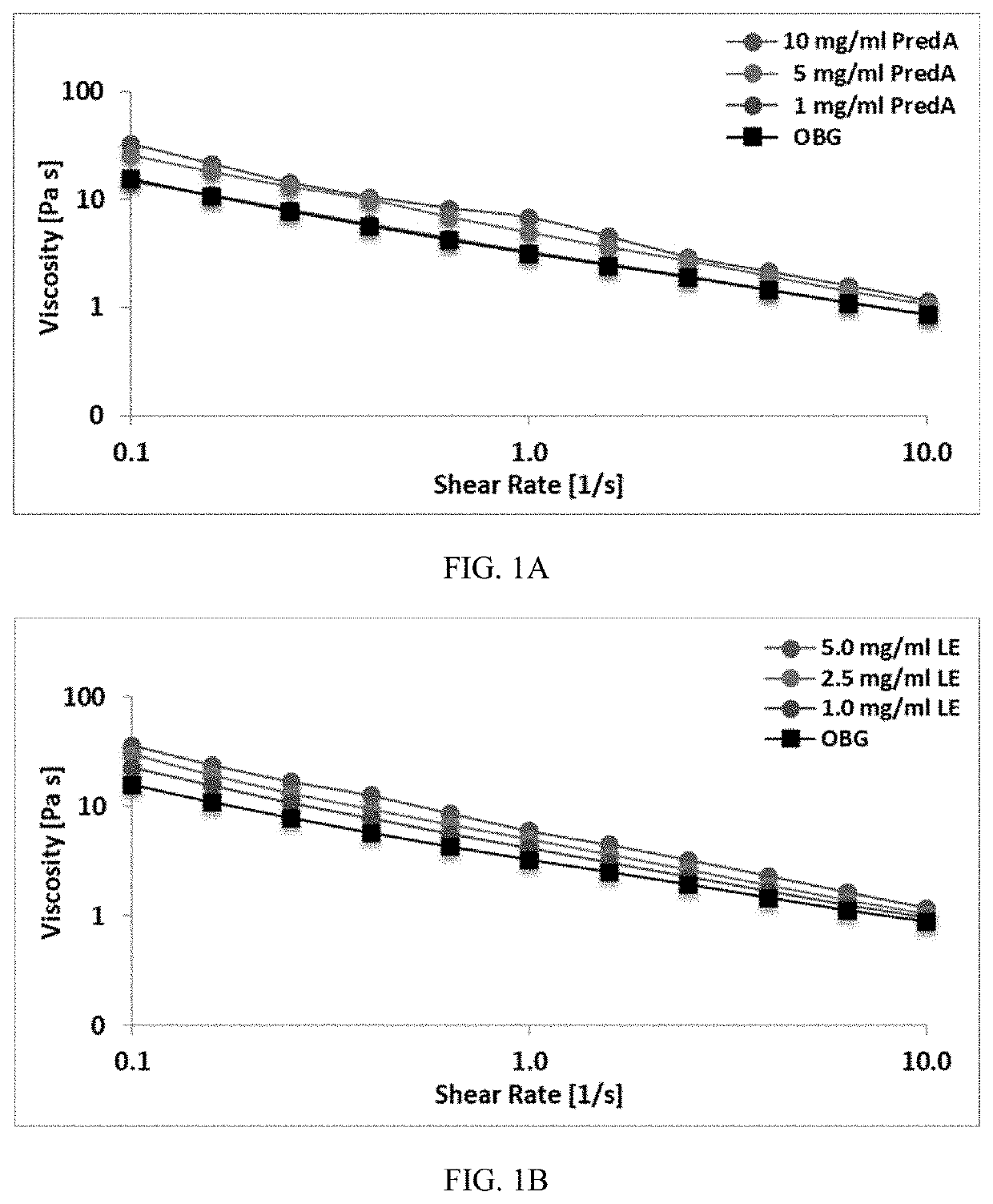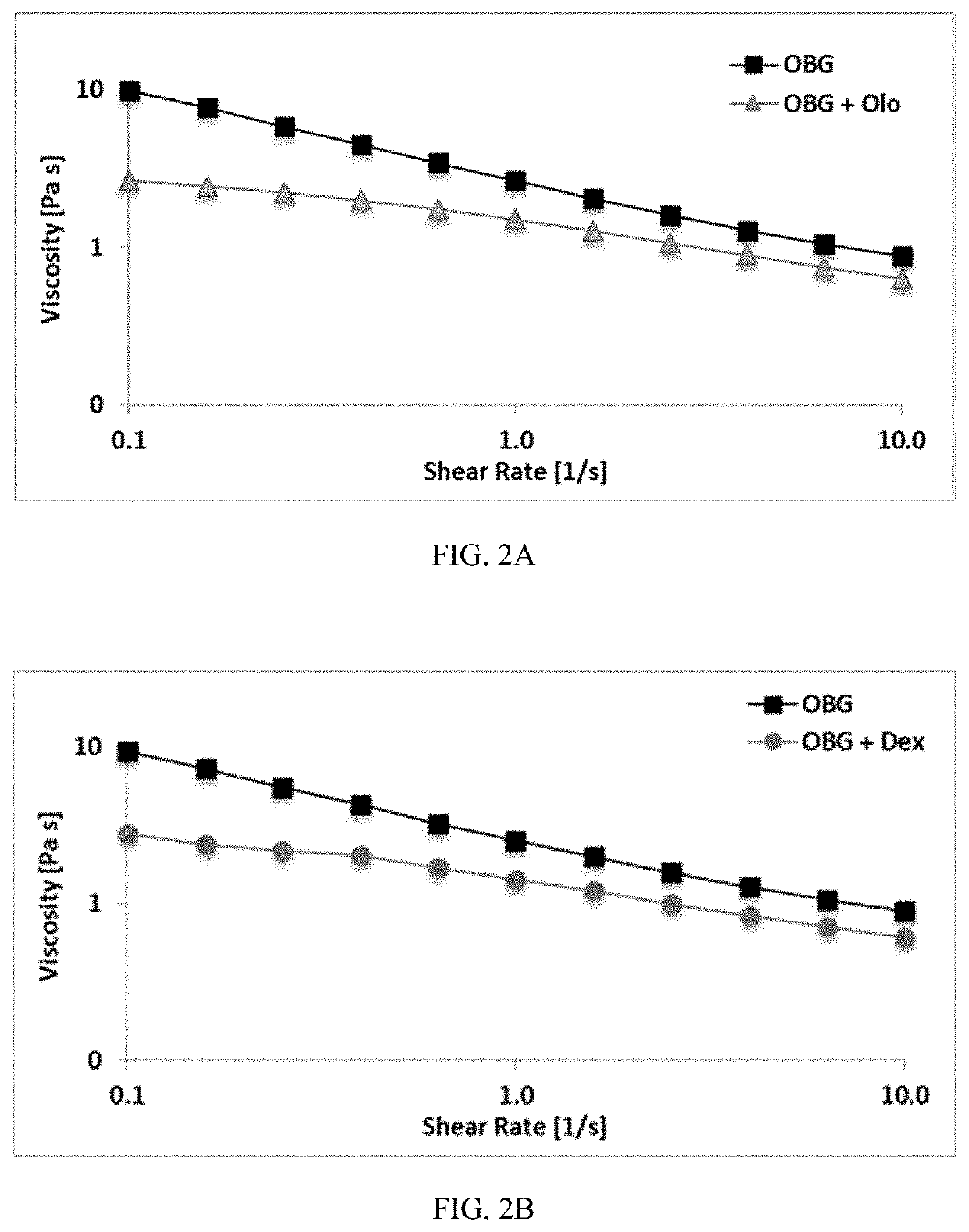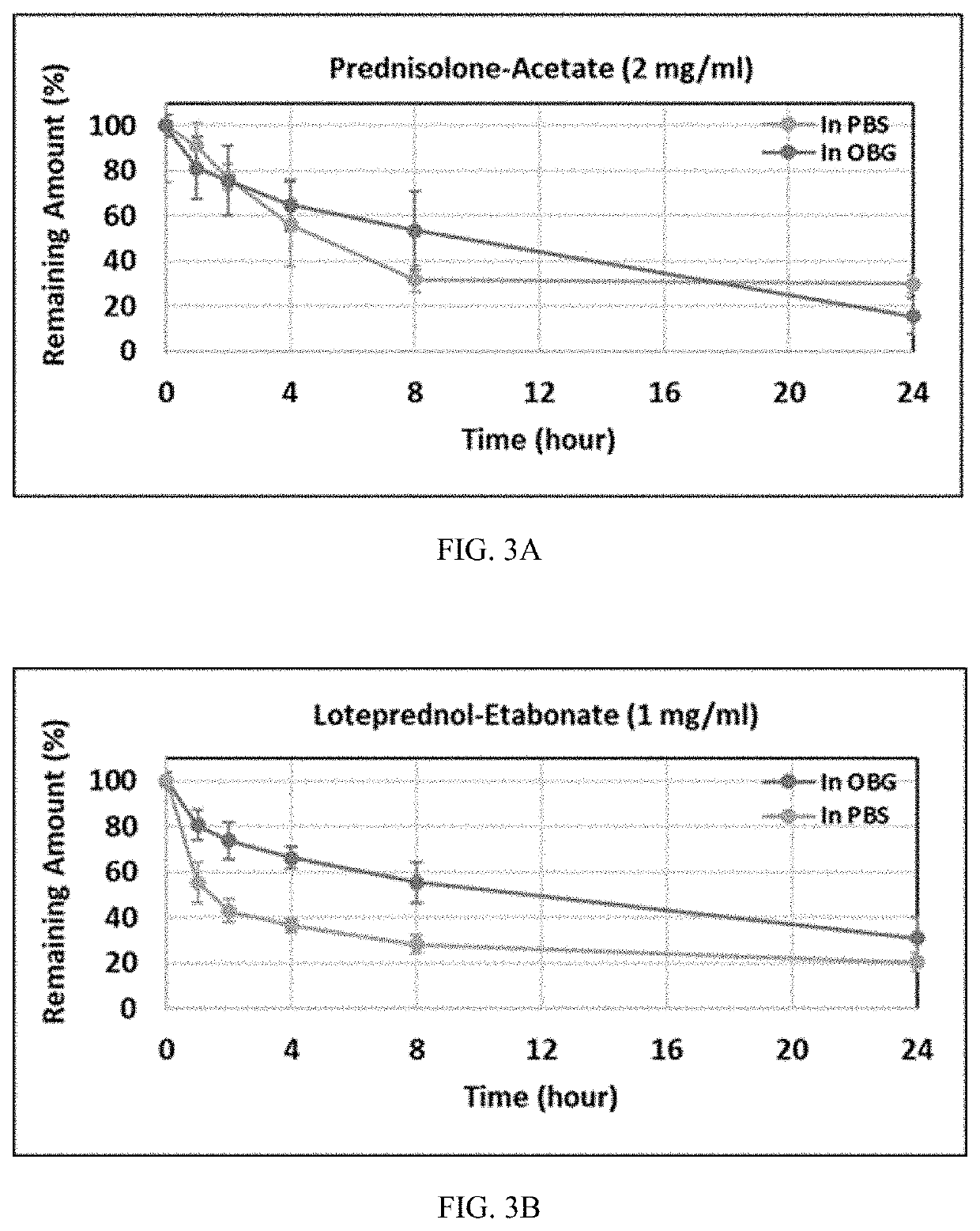Compositions and Methods for Treatment of Ocular Conditions
a technology for ocular conditions and compositions, applied in the direction of drug compositions, aerosol delivery, inorganic non-active ingredients, etc., can solve the problems of reducing the amount of drugs that can be taken up into the ocular tissues, poor water solubility of the therapeutics, and long contact time, so as to improve the treatment of ocular conditions or diseases, improve the contact time of the therapeutics, and improve the effect of vision
- Summary
- Abstract
- Description
- Claims
- Application Information
AI Technical Summary
Benefits of technology
Problems solved by technology
Method used
Image
Examples
example 1
Formation
[0067]Thiol-modified carboxymethyl HA (CMHA-S) was synthesized as described in Lawyer et al. [1] and Wendling et al. [2], with a thiol modification of 0.1, 0.2, 0.4, or 0.7 μmol thiol / mg. Hydrogels were created by dissolving CMHA-S in phosphate-buffered saline (PBS; pH 7.4). The CMHA-S was disulfide crosslinked under continuous mixing with the addition of sodium hypochlorite. Rheological testing was performed using a parallel plate format rheometer with a 25 mm-diameter stainless steel geometry. Samples (5-6 ml) of hydrogel were placed in a 35 mm Petri dish, and the geometry was lowered to a gap of 5 mm. To determine viscosity and shear-thinning, the shear rate was varied from 0.1 to 10 Hz. A decreasing viscosity as shear rate increases indicates shear-thinning behavior. Table 1 provides the thiol modification of the CMHA-S, concentration of CMHA-S, and resultant viscosity of the hydrogel (at 2.5 Hz) for 4 hydrogel formulations. All 4 formulations displayed shear-thinning b...
example 2
ic-Containing Hydrogels
[0068]Therapeutics were mixed into a hydrogel made as in Example 1, with a thiol modification about 0.1 μmol thiol / mg and CMHA-S concentration about 7.5 mg / ml. Therapeutics used were: prednisolone acetate (predA) at a concentration of 1, 5, or 10 mg / ml; loteprednol etabonate (LE) at a concentration of 1, 2.5, or 5 mg / ml; and olopatadine (Olo) and dexamethasone (Dex), each at a concentration of 1 mg / ml. PredA is considered poorly soluble to practically insoluble in water. LE has a water solubility of less than 0.001 mg / ml. Olo has a water solubility of about 0.03 mg / ml. Dex has a water solubility of less than 0.09 mg / ml. All of these therapeutics are therefore considered to have very low to poor solubility in water. Therapeutics were added as a finely ground powder to the crosslinked hydrogel and the mixture stirred or shaken vigorously to incorporate the therapeutic throughout. The therapeutic was dispersed throughout the hydrogel but was not fully dissolved.
example 3
Properties of Therapeutic-Containing Hydrogels
[0069]Viscosity, pH, and refractive index (RI) were measured for hydrogels described in Example 2 with and without therapeutic incorporated. Viscosity was determined as described in Example 1. RI was measured with a refractometer and pH was measured with a pH meter.
[0070]For predA, increasing concentration of the therapeutic in the hydrogel led to a slight increase in the viscosity (Table 2), although not significantly different than hydrogel without the predA, and the hydrogel maintained its shear thinning property (FIG. 1A). Further, the addition of the therapeutic did not substantially change the refractive index or pH of the hydrogel. The hydrogel did become slightly more opaque with increasing concentration of the predA; however, because only a small drop would be used and would spread across the surface of the eye, it would not be considered to be blur the vision.
TABLE 2Viscosity, refractive index (RI), and pH of hydrogels withand ...
PUM
| Property | Measurement | Unit |
|---|---|---|
| concentration | aaaaa | aaaaa |
| solubility | aaaaa | aaaaa |
| concentration | aaaaa | aaaaa |
Abstract
Description
Claims
Application Information
 Login to view more
Login to view more - R&D Engineer
- R&D Manager
- IP Professional
- Industry Leading Data Capabilities
- Powerful AI technology
- Patent DNA Extraction
Browse by: Latest US Patents, China's latest patents, Technical Efficacy Thesaurus, Application Domain, Technology Topic.
© 2024 PatSnap. All rights reserved.Legal|Privacy policy|Modern Slavery Act Transparency Statement|Sitemap



